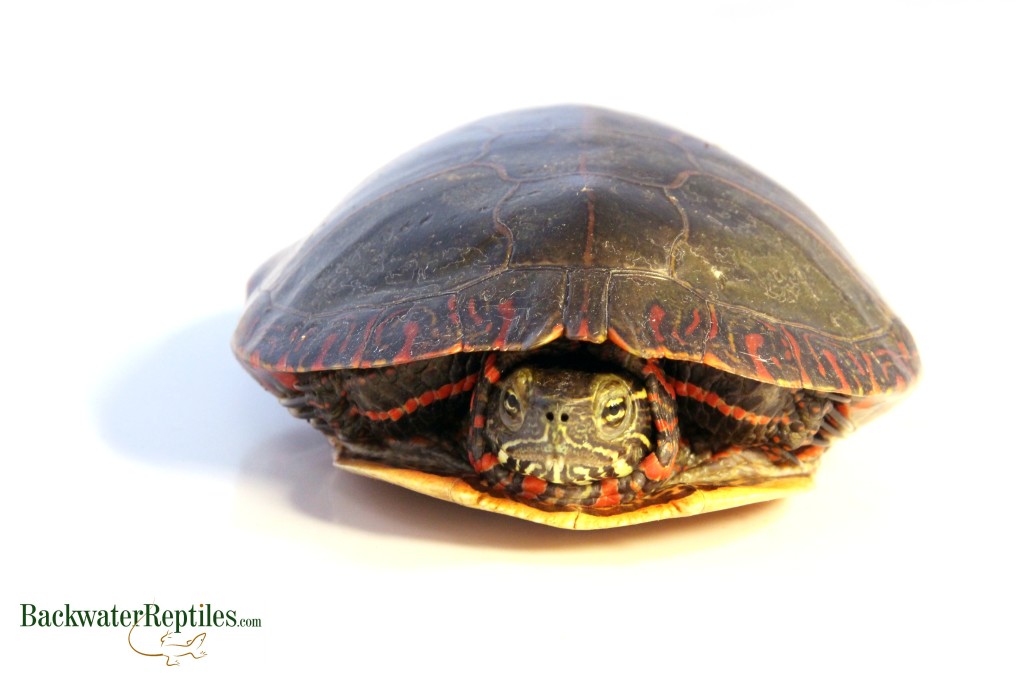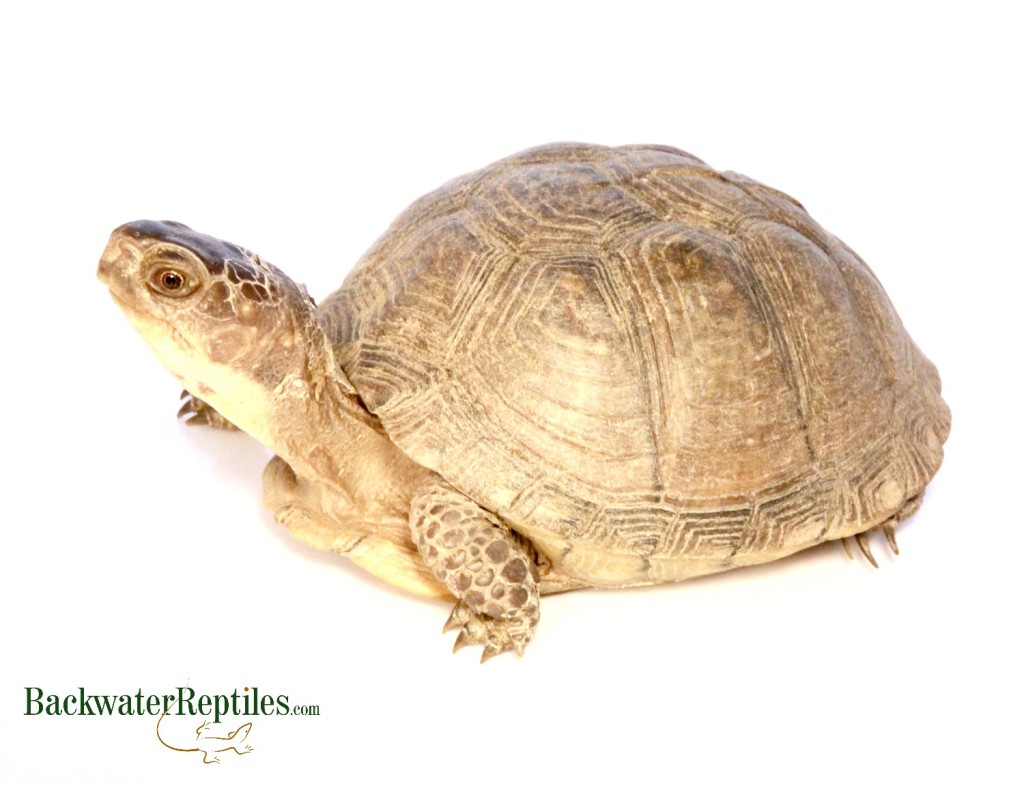Turtles are very popular house pets. Not only are they cute, but they’re easy to care for, very robust, gentle around children, and can also be very interactive lifelong companions. We highly recommend turtles for people who are new to keeping reptiles.
So, if you’re in the market for a simple pet, read on to find out our top picks for the best pet turtles.
Red Eared Slider (Trachemys s. elegans)
If you want a pet turtle with an aquatic habitat, our first recommendation would be a red eared slider. These turtles are very common pets and tend to thrive in captivity. They’re also almost always captive bred nationwide, which limits the risk of parasites.

Red eared sliders get their common name from the red marking on the sides of their head. Aside from having red “ears,” sliders also tend to scoot themselves right into the water when they sense any kind of danger in the wild, hence the “slider” portion of their name.
We feed our hatchlings commercially prepared turtle pellets, although we do supplement with live insects from time to time. Red eared sliders are omnivores and eat decaying animal and plant matter in the wild, so they are very accepting of many types of food in captivity.
Adult red eared sliders will grow to be approximately twelve inches long and can live for around twenty years if cared for properly. Due to their size, we do recommend at least a ten gallon tank for hatchlings.
As they grow, the turtles will require about ten gallons of water for every inch of shell. So, for instance, a turtle that is five inches long should be housed in a tank that is at least fifty gallons in size.
If you’re ready to get a red eared slider of your own, Backwater Reptiles sells captive bred Red ears, as well as their awesome cousins, the Yellow-bellied sliders (Trachemys scripta).
Painted Turtles (Chrysemys sp.)
Painted turtles are another fantastic species of aquatic turtle, however they only reach approximately six to eight inches long at maturity, which makes them very manageable in size.
Painted turtles are a bit harder to come by in captivity, although they are by no means rare. You just won’t tend to find them available in most large-scale, chain pet stores. Many people like the colorful red or yellow borders around the seams of the turtle’s inner carapace.

There are three main species of Painted turtle, including Eastern, Western, and Southern. All three look quite similar, with minor physical differences.
Painted turtles have very similar care requirements to the red eared slider, however they are slightly more carnivorous. Commercial turtle pellets can serve as a staple food, but painted turtles will thoroughly enjoy feeder fish, aquatic worms, aquatic shrimp, and traditional crickets when on land.
The key to keeping a painted turtle happy and healthy is offering a variety of foods in the form of both animal protein and vegetation.
Unlike the red eared slider, Painted turtles are less skittish and not as inclined to bolt into the water around people. This means they are more interactive pet turtles, although we still can’t guarantee that your turtle will enjoy being picked up, handled, and/or coddled.
Want a Painted Turtle of your own? Backwater Reptiles has got you covered!
Peninsula Cooter (Pseudemys peninsularis)
Like the Painted Turtle and Red Eared Slider, the Peninsula Cooter is an aquatic turtle that will require an aquatic enclosure. They thrive in both indoor or outdoor setups and many people even enjoy having them in turtle ponds in their backyard. However, we do recommend that smaller cooters be kept indoors until they reach a reasonable size.
There are many species of cooter turtles and identifying and classifying them into subspecies and categories can be confusing. However, the Peninsula Cooter is a subspecies of pond slider and they tend to live in areas with slower moving currents of water.

Peninsula cooters can grow quite large for an aquatic turtle. Females will be considerably larger than full-grown males and can be up to thirteen inches long at maturity.
Feeding your cooter shouldn’t be hard. They are not known for being picky eaters and their omnivorous diet means they’ll pretty much enjoy anything you give them. At Backwater Reptiles, we give turtle pellets for simplicity and supplement with protein every few days such as crickets, night crawlers, or roaches. We also make sure that a small amount of leafy greens are available, even if the turtles don’t always eat it.
Backwater Reptiles has healthy Peninsula Cooter Turtles for sale.
Hybrid Eastern Box Turtles (Terrapene sp.)
We highly recommend Eastern box turtles for reptile enthusiasts of all ages and levels of experience. These are very low maintenance turtles with long life spans and very docile dispositions.
Box turtles don’t require an aquatic habitat like all the other turtles on this list. They can even be kept outdoors in small contained areas provided that the temperatures in your area are not too extreme.
Here at Backwater Reptiles, we keep our Box turtles in a lush outdoor pen where they eat, sleep, and breed!

Juvenile Eastern box turtles tend to be more carnivorous than adults, but no matter what the age of the turtle, a varied diet of both plant and protein should be offered. For adults, we tend to give leafy green veggies and some insect such as night crawlers and crickets.
Eastern Box turtles are easily hybridized in captivity which results in some really interesting shell colorations and markings.
Backwater Reptiles has hybrid Eastern box turtles for sale.
Conclusion – Best pet turtles
Whether you desire an aquatic turtle or a land-based turtle, we think that any of the turtles on this list would make a great addition to your family.
They are all relatively low maintenance reptiles and the only real care concern with these popular pet turtle species is making sure you have enough room for the larger adult species.
We hope you’ve enjoyed our article on the best pet turtles and if you have any follow-up questions, please send us an e-mail.
